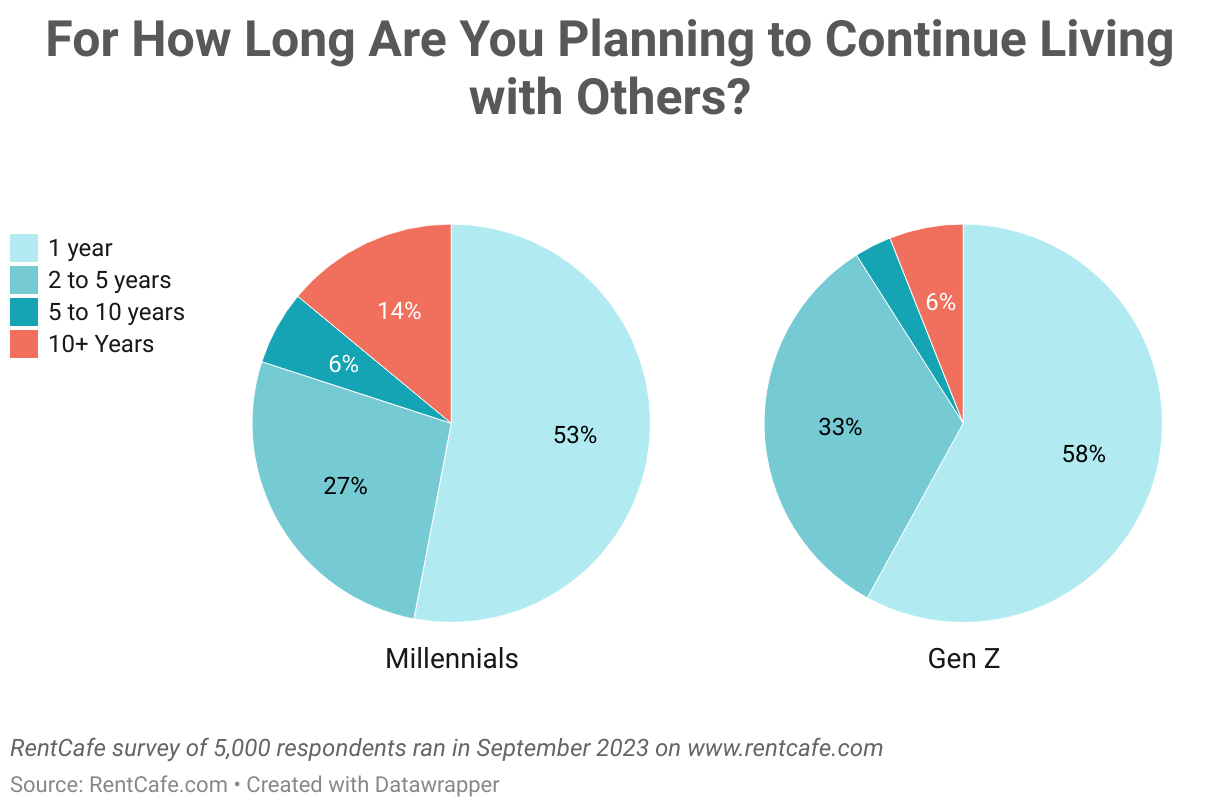PHILADELPHIA — A very different kind of “American dream” is apparently upon us as countless young adults are choosing to live with their parents instead of moving out on their own. A recent survey reveals a staggering 68 percent of Gen Z adults are opting to remain with their families. This shift is also noticeable among millennials, with 20 percent still residing in their family homes.
The analysis revealed that a significant number of both millennials and Gen Zers are choosing to share a household with at least one family member. This represents the largest generational shares among all age groups. Furthermore, the study estimates that 51 million individuals are currently living in multigenerational households.
What’s perhaps more surprising is that many of these young adults don’t anticipate leaving their family homes anytime soon. The RentCafe survey found that more than 40 percent of both millennials (47%) and Gen Zers (41%) expect to continue living with their families for at least another two years. Some Millennials, in particular, are remarkably patient, with 14 percent envisioning a shared household for at least another decade, while Gen Zers are somewhat more optimistic, with only six percent expecting a similar arrangement into adulthood.

Financial and Health Factors at Play
The reasons behind young adults staying at home are diverse but predominantly come down to financial or health-related circumstances. The data suggests that the average millennial, living with a family member at the age of 32, shares their home with three or four other people. Many of them work in food services, construction, or education.
Compared to previous generations, millennials are slower to leave the nest, with 18 percent of baby boomers and 17 percent of Gen X having lived with their parents at the same age as today’s average millennials. Gen Z also faces challenges, with 68 percent still at home by the age of 22, surpassing the percentages for Gen X (65%) and baby boomers (61%) at the same age.
Several factors could explain this generational difference. Younger generations may find it financially advantageous to stay with family to save on expenses such as childcare, utility bills, rent, or future down payments. Additionally, the increasing number of Millennials and Gen Zers choosing to care for family members may contribute to this trend.
Hotspots for Multigenerational Living
When it comes to the areas with the highest percentages of multigenerational households, West Coast metropolitan areas lead the way. Los Angeles stands out, with 35 percent of its millennials and 81 percent of Gen Z residents still living with family members. The high cost of living in this metro area, which is 51 percent above the national average, makes it difficult for young adults to strike out on their own.
California’s Riverside metro area follows closely, with 35 percent of millennials and 85 percent of Gen Zers remaining at home. New York and Providence, Rhode Island, share the third spot, with 28 percent of millennials in the Big Apple living in multigenerational households, while the Renaissance City is home to a higher percentage of Gen Zers in the same situation.

Easiest Places to Leave the Nest
Contrary to the belief that the pandemic has led to more young adults living with their parents, data from over 20 of the largest U.S. metros reveals a different trend. In these areas, the number of Gen Y and Gen Z in multigenerational households has decreased over the past five years, with many of them moving out independently.
One of the most significant declines is observed in Cincinnati, where 67 percent fewer millennials and 60 percent fewer Gen Zers are living with family members compared to 2018.
For Gen Z, Milwaukee, Wisconsin, leads the way in young adults leaving their parental homes, with 62 percent fewer Zoomers in multigenerational households now than five years ago. Similarly, Nashville, Tennessee, has seen a 65 percent decrease in the share of millennials living with family members during the same period.
In Raleigh, North Carolina, there has been a 62-percent decrease in the number of millennials living in multigenerational households since five years ago. While Raleigh may not be the most favorable location for Gen Z to venture out on their own, Virginia Beach, Virginia, offers that opportunity, with a 48-percent decrease in the share of Gen Zers in multigenerational households over the past five years.

Multigenerational Households on the Rise in Three Areas
While the trend suggests a decrease in multigenerational living, certain metro areas and demographics are bucking this trend. Richmond, Virginia, has witnessed a 15-percent increase in the number of millennials living in multigenerational households and a two-percent increase for Gen Zers compared to five years ago. Louisville, Kentucky, has experienced a similar increase, with a 21 percent rise for millennials and a 24-percent rise for Zoomers, resulting in shares of 15 percent and 73 percent, respectively.
Methodology
RentCafe.com, a nationwide apartment search website, looked at the number of individuals living in multigenerational households across 260 U.S. metro areas available from IPUMS CPS 2022 and 2018 estimates. IPUMS stands for Integrated Public Use Microdata Series and provides census and survey data from around the world, integrated across time and space. IPUMS is part of the Institute for Social Research and Data Innovation at the University of Minnesota.
The data was extracted from the IPUMS CPS through the online analysis tool for all of the years available for the Silent Generation, Baby Boomers, Generation X, Millennials, and Gen Z using the following variables: metro area, relationship to household head, generation breaks by Pew Research Center definitions, year, age, occupation, industry, and personal income.
For members of the Gen Z generation living in multigenerational households, researchers only included people who were 18 years old or older. In creating the rankings, they considered the top 50 metros by largest populations and the top 20 metro areas by changes for the main tables.


Eventually, you have to put on your big boy pants and get out on your own. Mommy and daddy are not going to live forever.